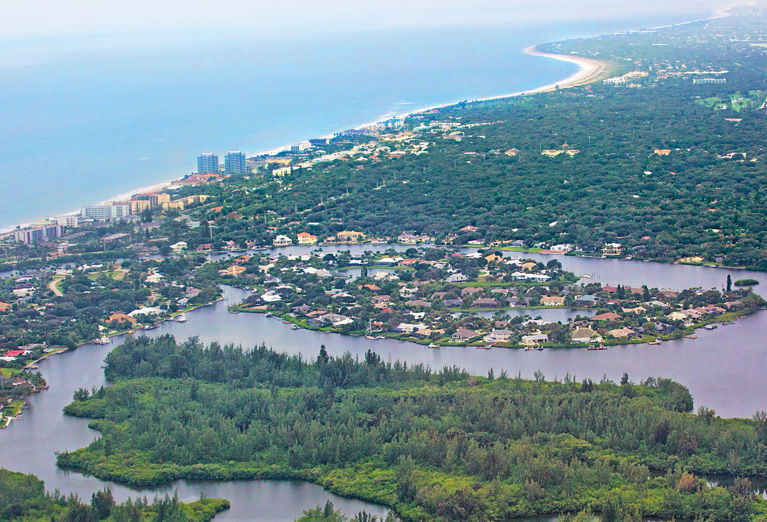
INDIAN RIVER COUNTY — The last chapter has finally been written in the long and ultimately successful battle by preservationists to prevent development of the 520-acre Lost Tree Island Archipelago, a group of a half dozen islands in the middle of the lagoon.
“It is the final piece of the puzzle,” says Ken Gruden, executive director of the Indian River Land Trust, referring to the Trust’s late-November acquisition of Van Busch Island, a 15-acre property a mile north of the Barber Bridge.
The $75,000 purchase completes the conservation by the Land Trust and the County of lagoon islands once slated for high-end residential development.
The islands now will be preserved in their natural state as in-town wilderness for future generations.
The islands are important for wildlife habitat, recreation and because they form much of the green view-shed that makes crossing the Barber Bridge such a pleasure and, tends to noticeably lower the blood pressure of arriving visitors.
“This was the one remaining island in private hands,” says Land Trust director of marketing and philanthropy Ann Taylor. “It is actually 30 acres, but 15 of it are under water. It is right across from Bahia Mar Road and was being marketed to the public for development, so we feel really good about getting it into conservation.”
Land Trust officials say the property, which they have renamed Cove Island, is especially significant because of its proximity to subdivisions in Vero Beach and Indian River Shores.
“Some portions of the island are only 50 yards from the seawalls of developed properties,” says David Heuberger, the Trust’s director of land protection.
“Because of its location, this was one of our priorities, and we are really excited about acquiring it,” says Gruden. “Having property like this preserved so close to the bridge, right in the middle of town, is not something you will find in many places.”
“All of the islands in the group used to be natural mangrove islands, but when they dug Gifford cut as part of the inland navigation channel they dumped dredge spoil on them, so they all now have uplands,” says Heuberger. “The county bought the rest of the islands for conservation and they have been doing a lot of work to restore the salt marsh. Our management plan will be coordinated with what the county is doing.”
The county islands have been minimally developed with a dock, picnic area and several shelters and camping spots, but Taylor says the Trust’s plan for Cove Island does not include a campground.
“The island will be kept as natural as possible and used for educational purpose, occasional kayak trips and as a wildlife refuge.”
“There is a sheltered lagoon on the island that is an important roosting area for migratory wading birds,” says Heuberger.
“Our hope is to meet with homeowners associations and residents in the neighborhoods near the island [which include Cache Cay and the Bethel Isle subdivision]. We want to get their input about our restoration plans and enlist them as partners.”
“We try to talk with all the neighbors near our properties,” Gruden says.
“They actually become great collaborators,” says Taylor. “At the Lagoon Greenway, the residents of River Park Place Apartments are incredible partners with us. They help keep it clean and walk the trails and let us know if anything’s out of place or needs attention. We have the same relationship with neighbors near other properties.”
Cove Island was owned by the Patricia Van Busch Trust. It was being offered for sale by Ron Rennick Jr. of Rennick Real Estate in conjunction with a quarter-acre waterfront lot at 722 Bahia Mar Road for $399,000.
“We were involved in the sale when the Trustee decided to sell the island to the Land Trust,” says Rennick. “The mainland lot is still for sale as a single-family home site, listed for $199,999.”
Based on the original asking price for the combined land package and the current asking price for the mainland lot, the Land Trust picked up its latest acquisition at substantial discount.
“Seventy five thousand was a great price,” says Heuberger.



